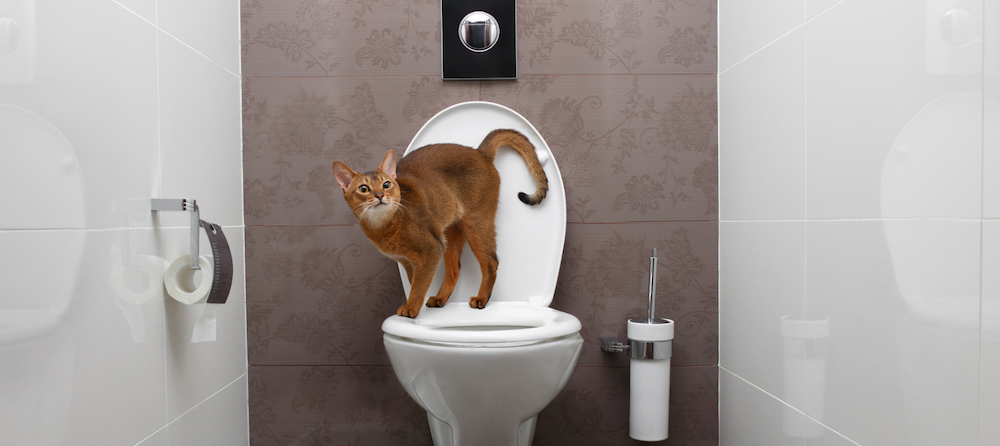Why You Shouldn't Flush Cat Poop Down Your Toilet - Preserve Your Pipe System
Why You Shouldn't Flush Cat Poop Down Your Toilet - Preserve Your Pipe System
Blog Article
This post in the next paragraphs pertaining to Can You Flush Cat Poop Down The Toilet? is particularly interesting. Don't skip it.

Intro
As cat proprietors, it's essential to bear in mind how we take care of our feline pals' waste. While it might seem hassle-free to flush pet cat poop down the toilet, this practice can have destructive repercussions for both the setting and human wellness.
Ecological Impact
Purging feline poop presents hazardous virus and parasites into the water system, posing a considerable threat to aquatic environments. These impurities can negatively affect aquatic life and compromise water high quality.
Wellness Risks
In addition to ecological problems, flushing feline waste can likewise posture health dangers to human beings. Pet cat feces may include Toxoplasma gondii, a bloodsucker that can cause toxoplasmosis-- a potentially serious health problem, specifically for pregnant women and individuals with damaged body immune systems.
Alternatives to Flushing
Fortunately, there are safer and much more responsible methods to take care of cat poop. Consider the following options:
1. Scoop and Dispose in Trash
The most typical technique of taking care of cat poop is to scoop it into a naturally degradable bag and toss it in the garbage. Make sure to make use of a committed clutter inside story and take care of the waste promptly.
2. Use Biodegradable Litter
Opt for biodegradable feline trash made from materials such as corn or wheat. These trashes are environmentally friendly and can be securely dealt with in the trash.
3. Bury in the Yard
If you have a yard, consider burying feline waste in an assigned location away from veggie yards and water sources. Make sure to dig deep enough to prevent contamination of groundwater.
4. Install a Pet Waste Disposal System
Buy a pet dog garbage disposal system especially made for feline waste. These systems utilize enzymes to break down the waste, decreasing odor and ecological influence.
Final thought
Responsible pet possession prolongs beyond supplying food and sanctuary-- it additionally entails correct waste management. By refraining from flushing cat poop down the toilet and choosing alternate disposal techniques, we can decrease our ecological impact and shield human wellness.
Why Can’t I Flush Cat Poop?
It Spreads a Parasite
Cats are frequently infected with a parasite called toxoplasma gondii. The parasite causes an infection called toxoplasmosis. It is usually harmless to cats. The parasite only uses cat poop as a host for its eggs. Otherwise, the cat’s immune system usually keeps the infection at low enough levels to maintain its own health. But it does not stop the develop of eggs. These eggs are tiny and surprisingly tough. They may survive for a year before they begin to grow. But that’s the problem.
Our wastewater system is not designed to deal with toxoplasmosis eggs. Instead, most eggs will flush from your toilet into sewers and wastewater management plants. After the sewage is treated for many other harmful things in it, it is typically released into local rivers, lakes, or oceans. Here, the toxoplasmosis eggs can find new hosts, including starfish, crabs, otters, and many other wildlife. For many, this is a significant risk to their health. Toxoplasmosis can also end up infecting water sources that are important for agriculture, which means our deer, pigs, and sheep can get infected too.
Is There Risk to Humans?
There can be a risk to human life from flushing cat poop down the toilet. If you do so, the parasites from your cat’s poop can end up in shellfish, game animals, or livestock. If this meat is then served raw or undercooked, the people who eat it can get sick.
In fact, according to the CDC, 40 million people in the United States are infected with toxoplasma gondii. They get it from exposure to infected seafood, or from some kind of cat poop contamination, like drinking from a stream that is contaminated or touching anything that has come into contact with cat poop. That includes just cleaning a cat litter box.
Most people who get infected with these parasites will not develop any symptoms. However, for pregnant women or for those with compromised immune systems, the parasite can cause severe health problems.
How to Handle Cat Poop
The best way to handle cat poop is actually to clean the box more often. The eggs that the parasite sheds will not become active until one to five days after the cat poops. That means that if you clean daily, you’re much less likely to come into direct contact with infectious eggs.
That said, always dispose of cat poop in the garbage and not down the toilet. Wash your hands before and after you clean the litter box, and bring the bag of poop right outside to your garbage bins.
https://trenchlesssolutionsusa.com/why-cant-i-flush-cat-poop/

I'm just very interested in How to Dispose of Cat Poop and Litter Without Plastic Bags and I'm hoping you enjoyed reading our blog entry. Sharing is nice. Who knows, you may be helping someone out. I take joy in reading our article about How to Dispose of Cat Poop and Litter Without Plastic Bags.
Schedule Here Report this page